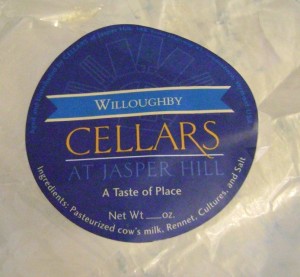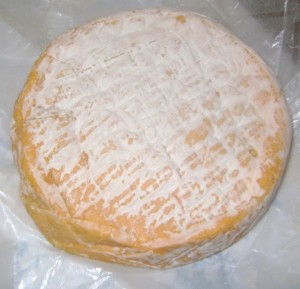“Each cheese is its own planet.” This statement encapsulates the research approach of Dr. Benjamin Wolfe, a microbiologist currently working at Harvard’s FAS Center for Systems Biology. Dr. Wolfe is pioneering research on the microbial environments of artisan cheeses. One outcome of his work is the creation of the artisan cheese, Willoughby.
Willoughby is the result of a joint venture between Dr. Wolfe and The Cellars at Jasper Hill, an esteemed artisan cheese production and aging outfit located in northern Vermont. Wolfe identified a new strain of the yeast, Geotrichum Candidum, growing on the rind of one of Jasper Hill’s most famous cheeses, Balyhazen Blue. After isolating the strain of Geotrichum, Wolfe helped Jasper Hill create an entirely new starter culture which led to Willoughby.
Understanding the significance of Wolfe’s achievement requires a basic knowledge of cheese making:
- Almost all cheeses are made with a starter culture which is added to the milk at the beginning of the cheese-making process.
- This starter culture contains microbes such as yeast, mold, or bacteria which determine the type of cheese being made and contribute to flavor and texture.
- All commercial starter cultures used by American cheese makers are derived from European cheeses – a Vermont cheddar is created with European microbes
- Popular starter cultures include:
- Environmental microbes, derived from raw milk or the aging environment, are how we currently experience the terroir of most American artisan cheeses
At first glance, Willoughby looks like an ordinary artisan cheese.
This semi-soft, washed rind disc of cheese has a pungent but enticing aroma and a bloomy white mold covering the orange hued rind. The flavor of Willoughby is a study in opposites creamy and fresh, yet simultaneously savory and earthy with a hint of wild mushroom. Willoughby’s unique microbes provide consumers with a true taste of The Cellars at Jasper Hill, and make this a completely American cheese derived from a native strain of Geotrichum.
Terroir, or taste of place, is a hotly debated concept in the world of food. Some purists believe terroir is influenced solely by environmental factors such as climate or animal diet. Others such as noted food anthropologist Dr. Rachel Black advocate a more balanced view. Dr. Black promotes an understanding of terroir that is reliant on the human touch. After all, cheese is a “… crafted product.” Agricultural products such as wine and cheese experience human intervention from the beginning, through careful cultivation of the environment in which these products are made. Dr. Black says that Wolfe’s research “cultivates a microbial environment… (through) human intervention. He is able to bring forth something that expresses and encourages biodiversity.”
Through identifying naturally occurring strains of Geotrichum native to either the raw milk or environment and creating starter cultures from these strains, Wolfe could revolutionize the world of American artisan cheese in the following ways:
- Creating entirely new types of cheese and significantly broadening the flavors and varieties of cheese available in the U.S. market.
- Replacing industrialized starter cultures with endemic ones, all aspects of a cheese would be impacted by the environmental microbes.
- Altering the flavor profiles of these cheeses and making a cheese that is completely a product of its “American” environment.
- Isolating strains of Geotrichum native to a cheeses environment can create a cheese that truly represents a taste of place and has its own unique terroir.
Throughout our phone conversation, Wolfe was hesitant to use the word terroir. He believes that the concept is more of a marketing term and not scientifically validated. Wolfe does advocate that “… microbes have their own unique signatures and can work with other environmental factors to collectively influence the flavors of products being made on farms.” Wolfe’s research may allow American cheese makers to broaden and diversify artisan cheeses, creating products that represent the natural environment in which they are made. With results like Willoughby, cheese enthusiasts are excited to imagine the future potential of American artisan cheese.




